Flowers aren’t just for aesthetics—they can also play a crucial role in their ability to naturally repel pests from your garden. By planting the right flowers, you can deter harmful insects while attracting beneficial pollinators. Below are some of the best flowers to plant for natural pest control, along with their benefits and care tips.
1. Snapdragons:

Benefits:
-Repels aphids and other soft-bodied insects
-Attracts pollinators like bees and butterflies
Care Tips:
-Plant in well-draining soil with full sun to partial shade
-Keep soil consistently moist but not waterlogged.
Product Suggestion:
- Gardeners Basics, Snapdragon Seeds for Planting (Maximum Mix Snap Dragon) – A gorgeous addition to any pest-resistant garden.
2. Marigolds:
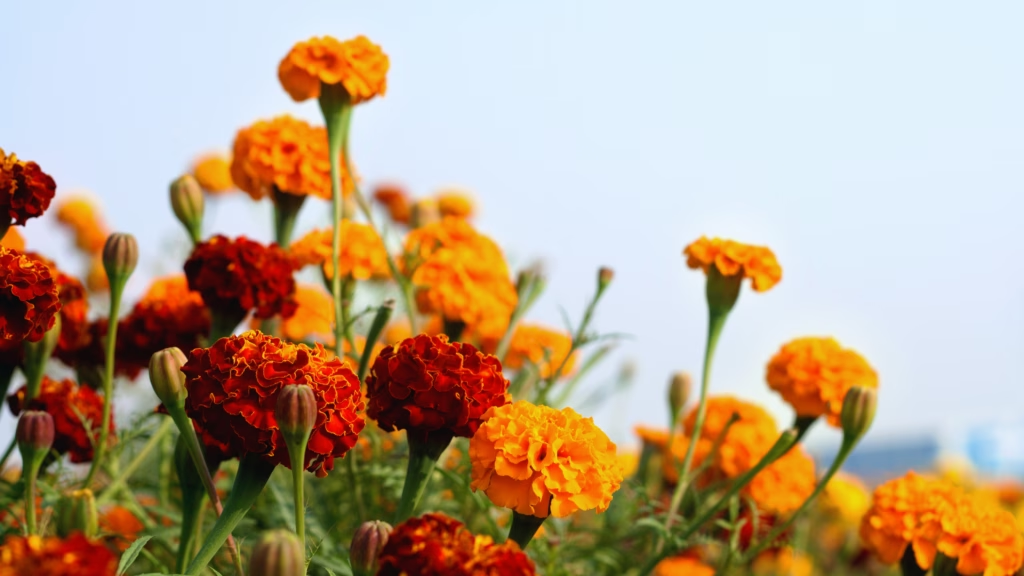
Benefits:
-Produces a strong scent that deters nematodes, aphids, and whiteflies
-Attracts predatory insects like ladybugs and lacewings
Care Tips:
-Thrives in full sun with well-drained soil
-Deadhead spent flowers to encourage continuous blooming
Product Suggestions:
- The Old Farmer’s Almanac Marigold Seeds (Petite Mixture) – Perfect for adding bright color while naturally protecting your garden.
- Sweet Yards African Marigold Seeds Mix – Huge Orange and Yellow Blooms
3. Calendula (Calendula officinalis)
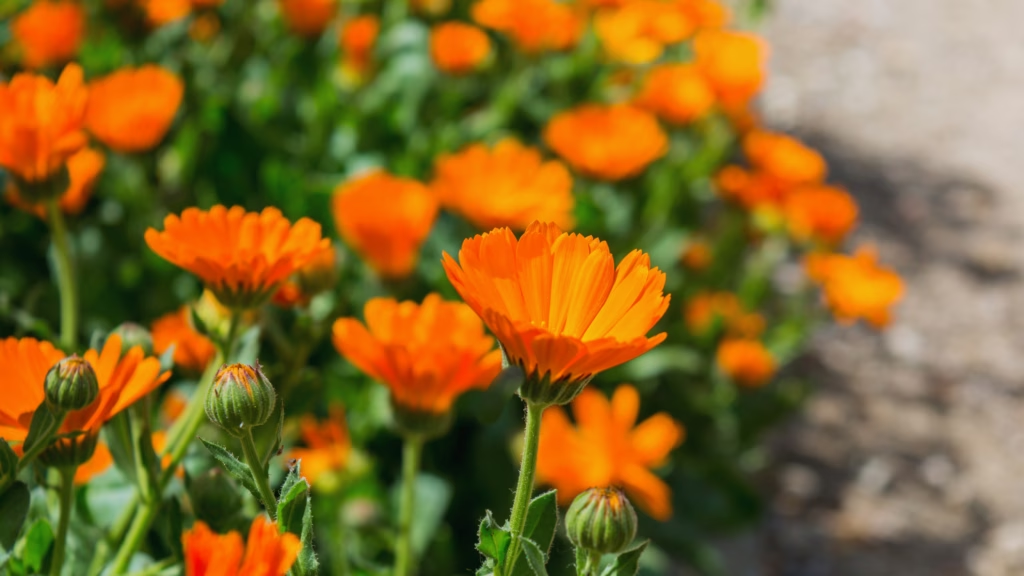
Benefits:
-Repels mosquitoes, aphids, and whiteflies
-Attracts beneficial pollinators
-Has antifungal properties that protect surrounding plants
Care Tips:
-Prefers full sun but tolerates partial shade
-Requires moderate watering and well-draining soil
Product Suggestion:
- Calendula ‘Pacific Beauty Mix’ – Extra Large Packet – A must-have for organic gardeners looking for both beauty and function.
4. Zinnias (Zinnia elegans)
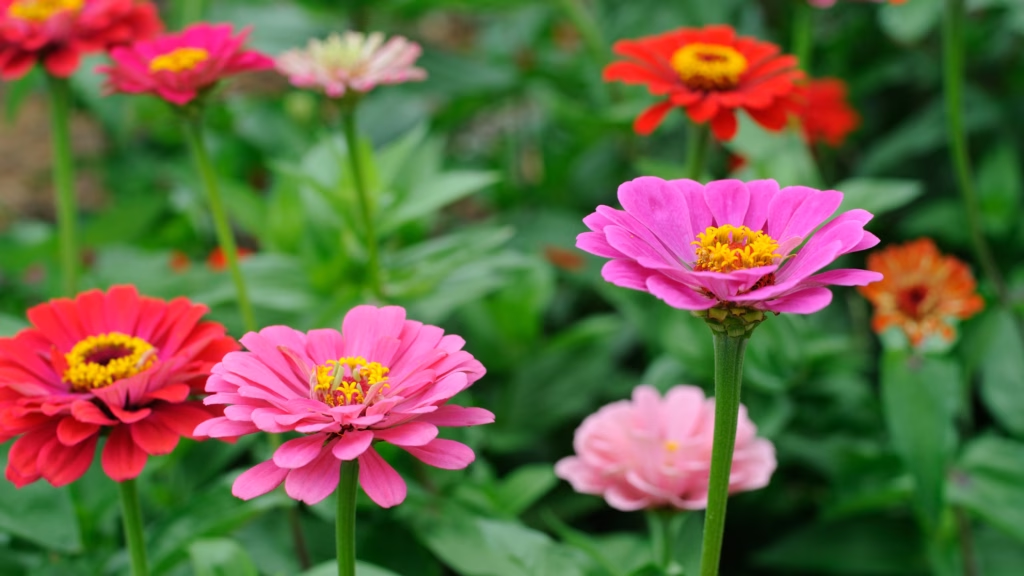
Benefits:
-Attracts predatory insects like ladybugs and hoverflies that feed on aphids and whiteflies
-Deters cucumber beetles and tomato worms
Care Tips:
-Loves full sun and warm temperatures
-Water at the base to prevent mildew
Amazon’s Choice:
- Zinnia Seeds – California Giants Mix – Vibrant colors with natural pest control benefits.
Related article: The Easiest Flower to Grow: Zinnias
5. Bee Balm (Monarda spp.)
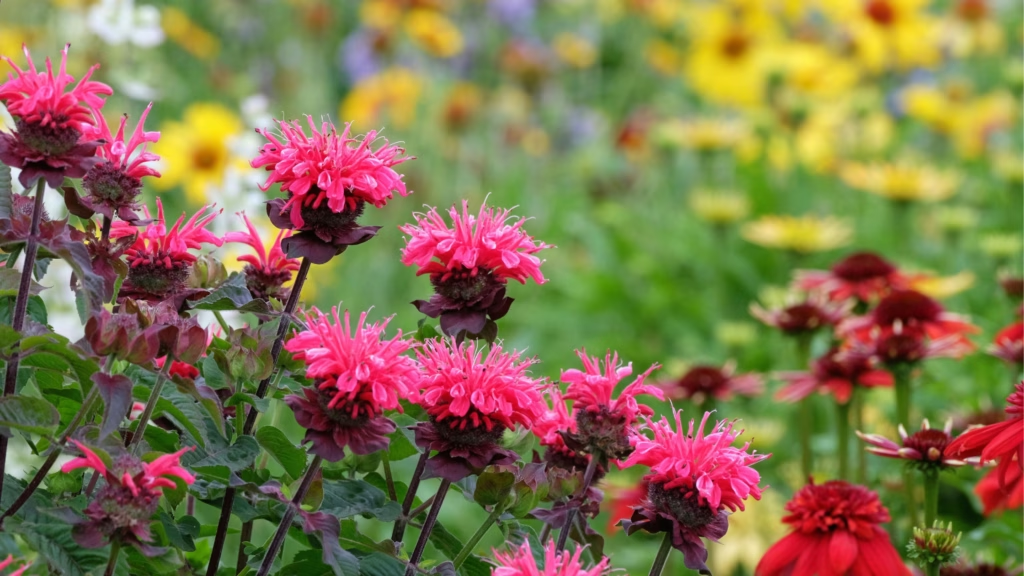
Benefits:
-Repels mosquitoes and aphids
-Attracts pollinators, including bees, butterflies, and hummingbirds
Care Tips:
-Prefers moist, well-draining soil in full sun to partial shade
-Prune after flowering to promote new growth
Amazon Pick:
- Seed Needs, Wild Bergamot Bee Balm Seeds – A pollinator-friendly flower with pest-fighting power.
6. Goldenrod (Solidago spp.)
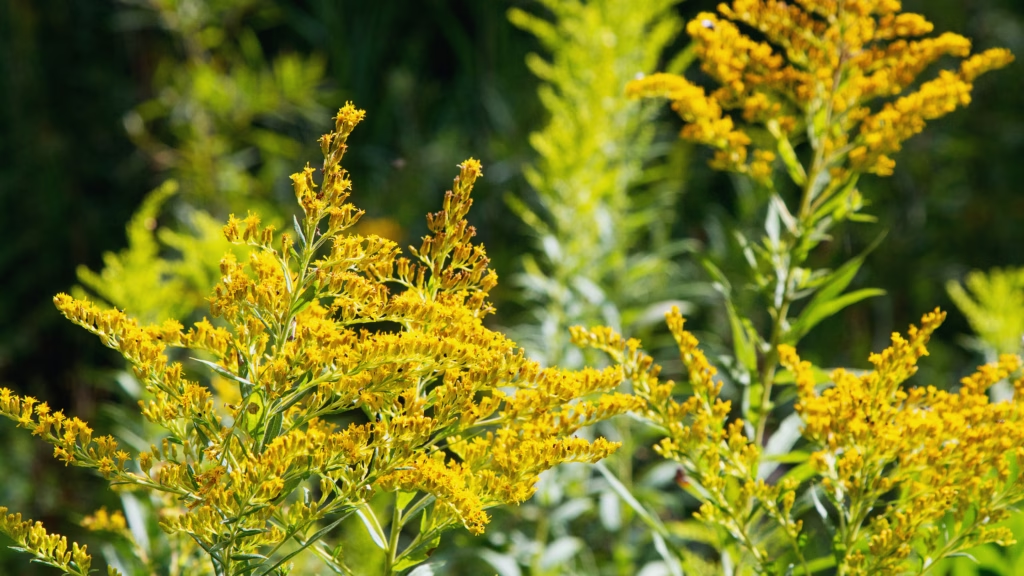
Benefits:
-Attracts beneficial insects that prey on pests
-Supports pollinators, including butterflies and bees
Care Tips:
-Tolerates various soil conditions but thrives in full sun
-Water moderately and cut back in late fall
Amazon Suggestion:
- Everwilde Farms – 2000 Old Field Goldenrod Native Wildflower Seeds – A native wildflower that supports a healthy garden ecosystem.
7. Anise Hyssop (Agastache foeniculum)

Benefits:
-Deters cabbage moths and flea beetles
-Attracts bees and butterflies
-Has antimicrobial properties that benefit nearby plants
Care Tips:
-Prefers well-drained soil and full sun
-Drought-tolerant once established
Amazon Pick:
- Seed Needs Anise Hyssop Seeds for Planting – Great for companion planting and attracting bees.
8. Cosmos (Cosmos bipinnatus)

Benefits:
-Attracts lacewings and parasitic wasps that help control aphids and caterpillars
-Deters squash bugs and thrips
Care Tips:
-Thrives in full sun with minimal watering
-Deadhead to encourage continuous blooms
- Related Article: A Beginner’s Guide to Chaos Gardening:
Amazon Pick:
- Seed Needs Cosmos Flower Seeds 10+ Varieties Specialty Crazy Blend – Easy to grow and highly beneficial for organic gardens.
- Back to the Roots – 100% Organic Seed Packet – Cosmos ‘Sensation Mix’
9. Globe Amaranth (Gomphrena globosa)
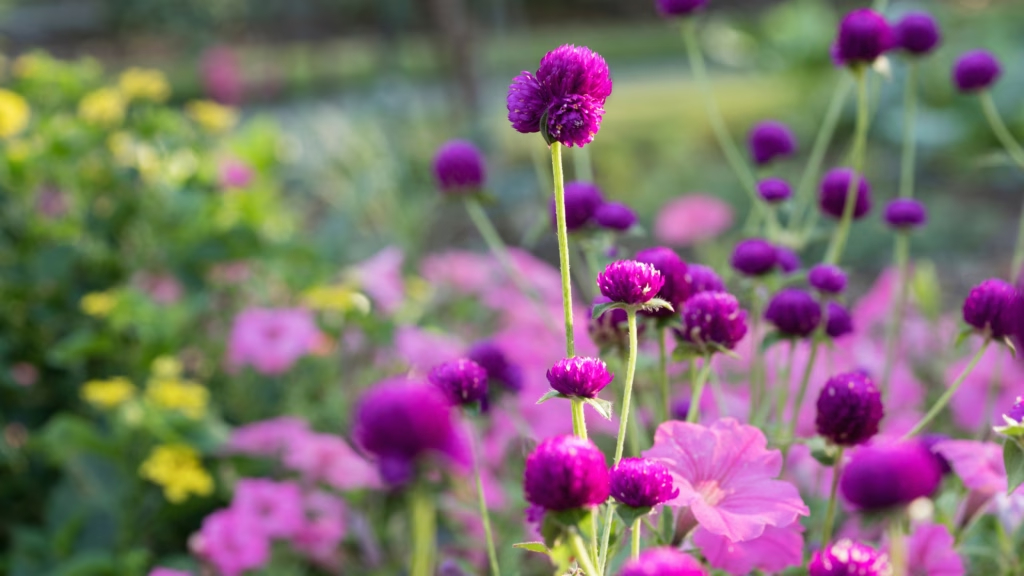
Benefits:
-Repels aphids and whiteflies
-Attracts butterflies and bees
Care Tips:
-Prefers well-drained soil and full sun
-Drought-resistant and low maintenance
Amazon Pick:
- Globe Amaranth Outsidepride 1000 Seeds Annual – A drought-tolerant and pest-resistant choice.
How to Maximize Pest Control Benefits
To make the most of these flowers in your garden:
–Plant in clusters to enhance their repellent properties.
–Combine with herbs like basil, lavender, and rosemary for even stronger natural pest control.
–Rotate plant locations each season to prevent pests from adapting.
A Natural Approach to a Thriving Garden
By incorporating these pest-repelling flowers into your garden, you’re taking a natural and sustainable approach to plant health. Not only will your space be filled with vibrant blooms, but you’ll also reduce the need for chemical pesticides, promoting a healthier environment for you and your plants.
Happy planting! x
Disclaimer: As an Amazon Associate, we earn from qualifying purchases. This helps support the blog at no extra cost to you!
For all the flower info and inspiration, head over to our “Flowers” page and find what you’re looking for.
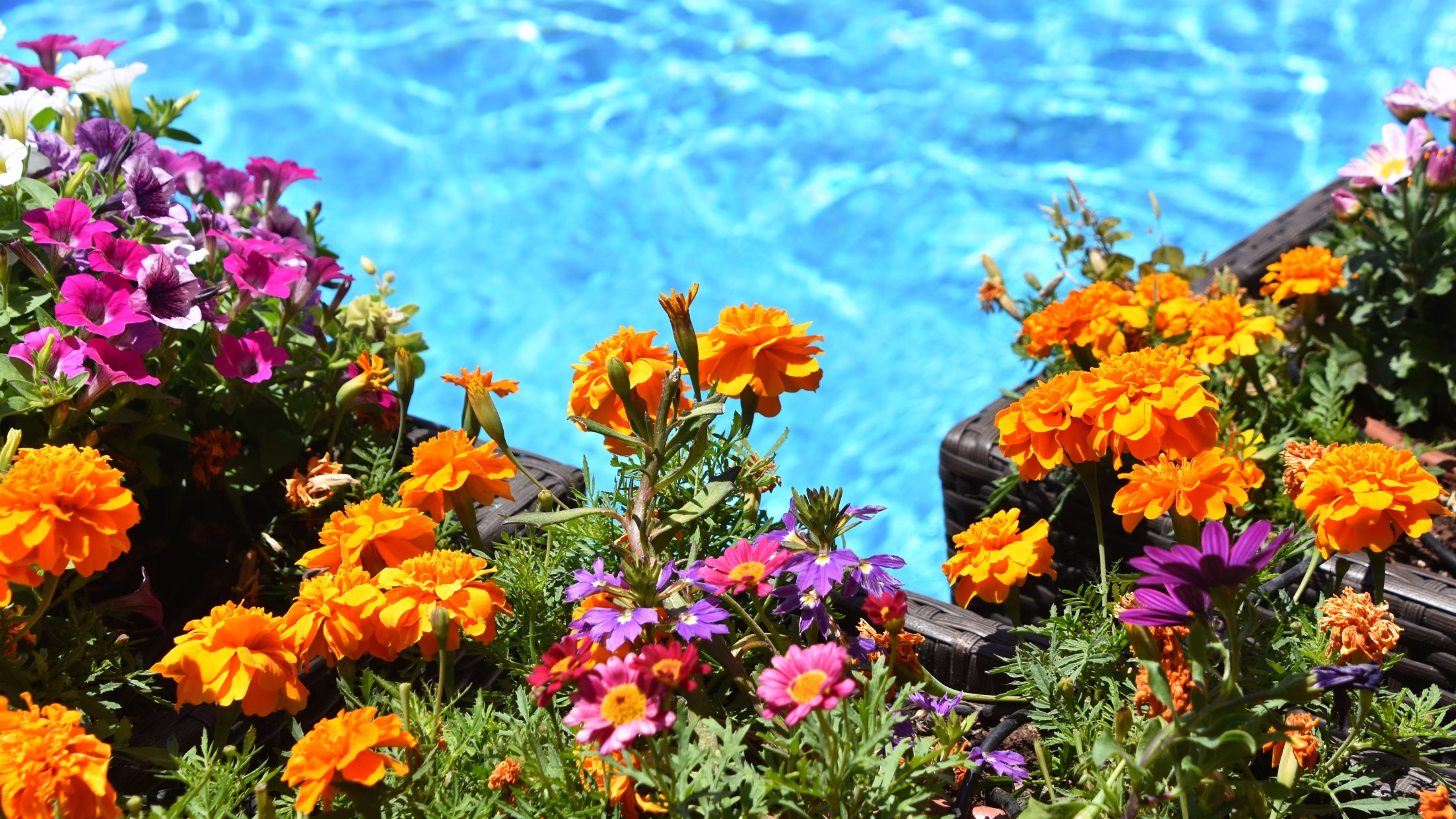

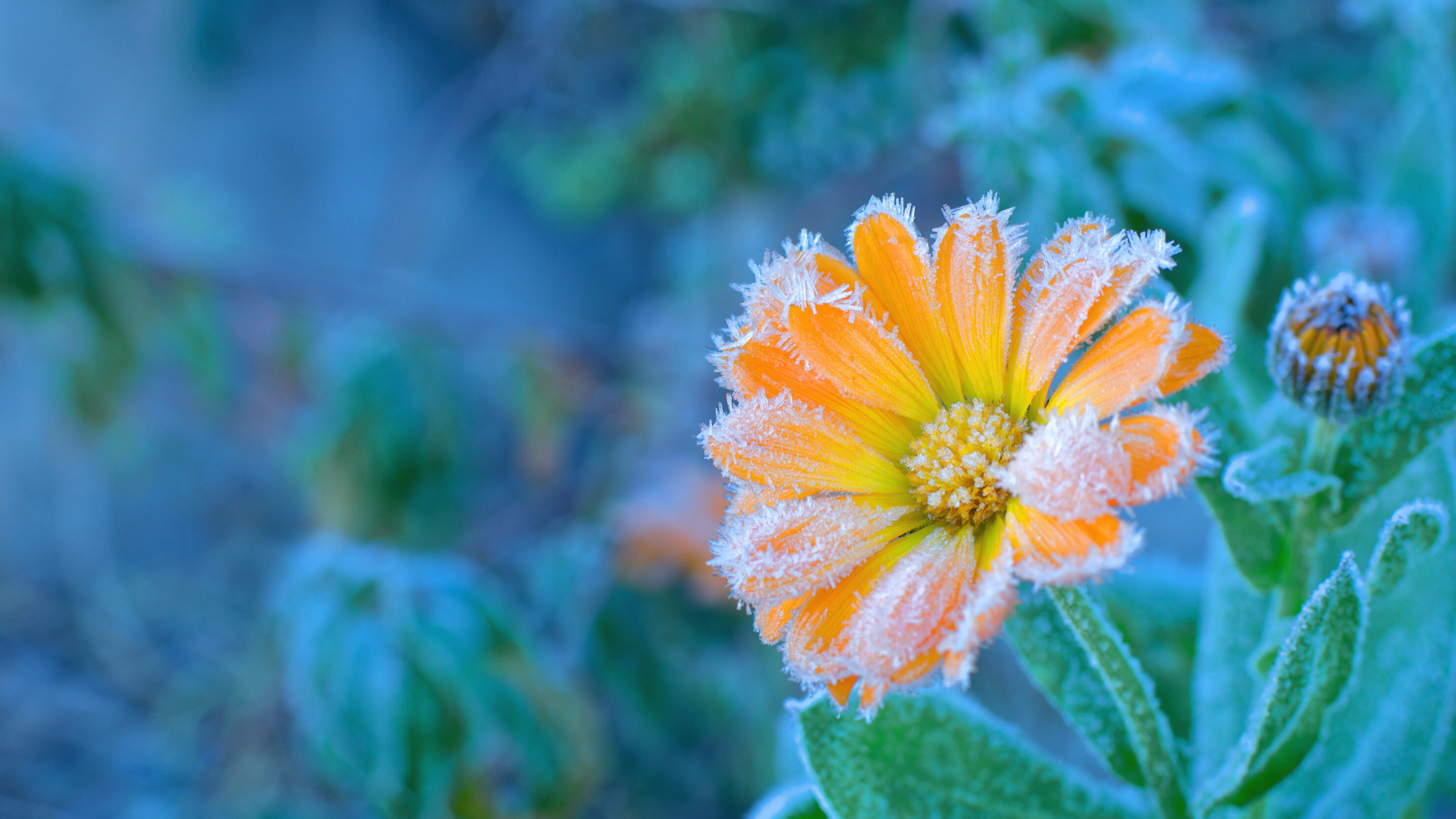

This is wonderful appreciate your great insight and beautiful photos! Looking forward to implementing some of these tips and I have shared this with our local garden club as well. Thank you 🙂
Hi Mike, thank you so much for your support. We look forward to hearing about your gardening success and keeping those pesky pests at bay this season 🌱☺️